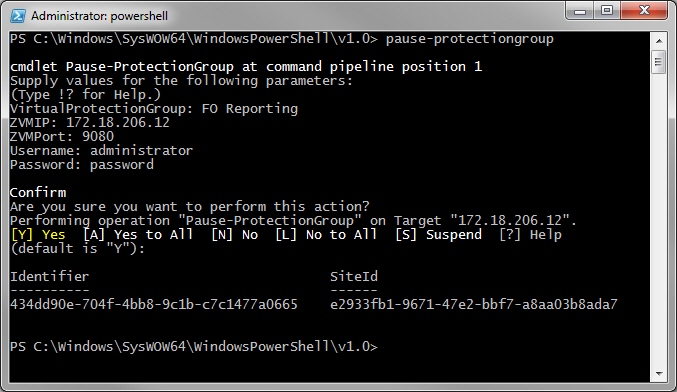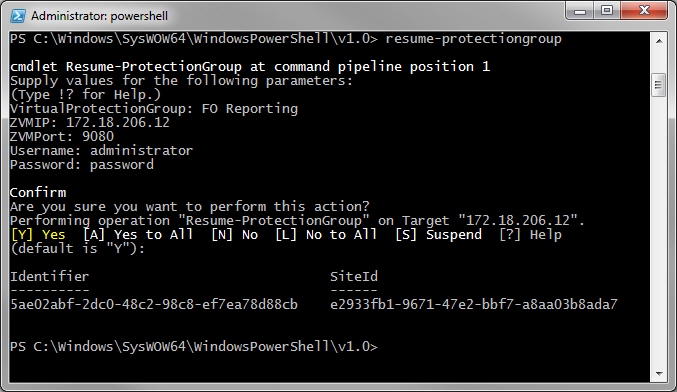Pausing and Resuming Protection of a VPG
During periods when the WAN bandwidth is utilized to its maximum, you can pause the protection of a VPG, to free-up some of this bandwidth. After pausing the protection, the VPG can still be recovered, to the last checkpoint written to the journal before the pause operation.
Note: It is recommended to add a checkpoint to the VPG to pause, if you might want to recover the VPG to the latest point in time before being paused. For details, see
Adding a Checkpoint.
To pause the protection of a VPG:
1. Run the Pause-ProtectionGroup cmdlet from the PowerShell prompt.
PS C:\Windows\SysWOW64\WindowsPowerShell\v1.0> Pause-ProtectionGroup |
2. You are prompted for the VPG to pause. The VPG name is case-sensitive.
3. You are prompted for the IP address of one of the Zerto Virtual Manager sites, either where the virtual machines in the VPG are protected or recovered, for the HTTP port used for inbound communication with that Zerto Virtual Manager and a valid username and password, defined in the
users.txt file for the Zerto Virtual Manager where the cmdlet is run, as described in
Defining Credentials to Run Zerto Virtual Replication Cmdlets.
The Pause-ProtectionGroup cmdlet completes, returning the command task identifier and site identifier.
To resume the protection of a VPG:
1. Run the Resume-ProtectionGroup cmdlet from the PowerShell prompt.
PS C:\Windows\SysWOW64\WindowsPowerShell\v1.0> Resume-ProtectionGroup |
2. You are prompted for the VPG to resume protecting. The VPG name is case-sensitive.
3. You are prompted for the IP address of one of the Zerto Virtual Manager sites, either where the virtual machines in the VPG are protected or recovered, for the HTTP port used for inbound communication with that Zerto Virtual Manager and a valid username and password, defined in the
users.txt file for the Zerto Virtual Manager where the cmdlet is run, as described in
Defining Credentials to Run Zerto Virtual Replication Cmdlets.
The Resume-ProtectionGroup cmdlet completes, returning the command task identifier and site identifier. After the protection resumes, a Bitmap Sync will most probably be performed to synchronize the protection and recovery sites.


